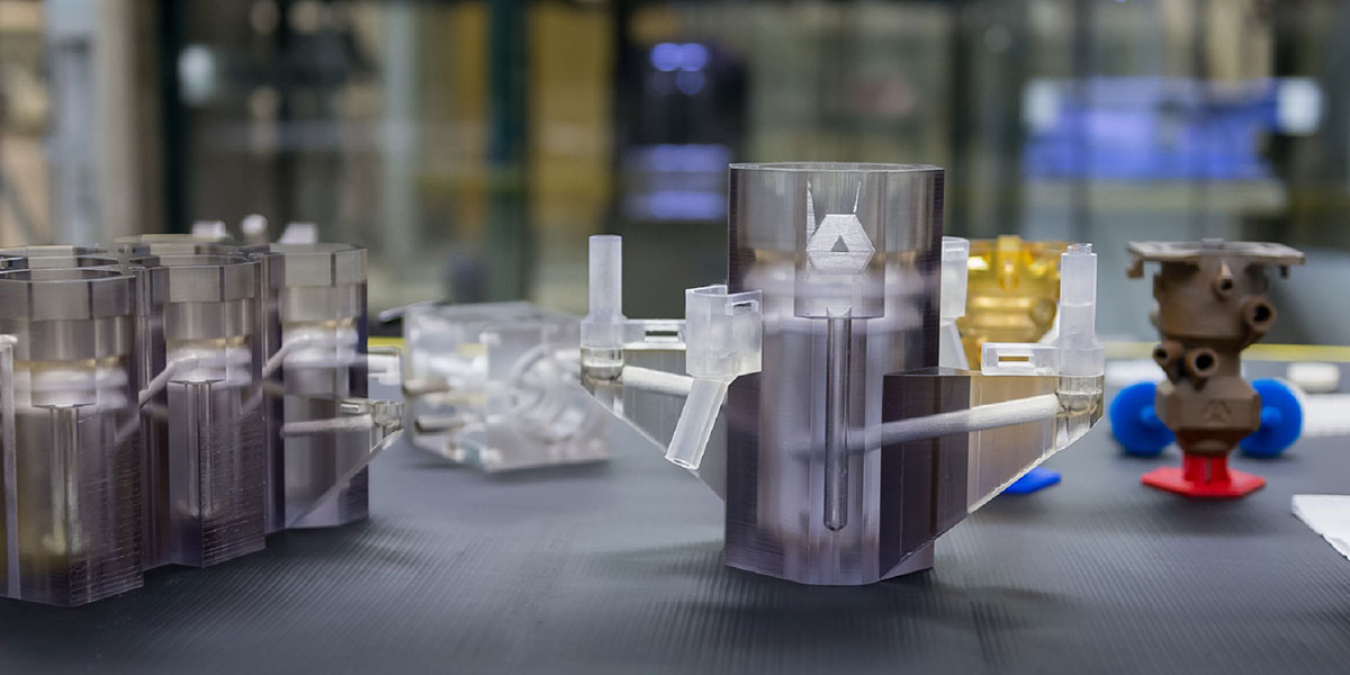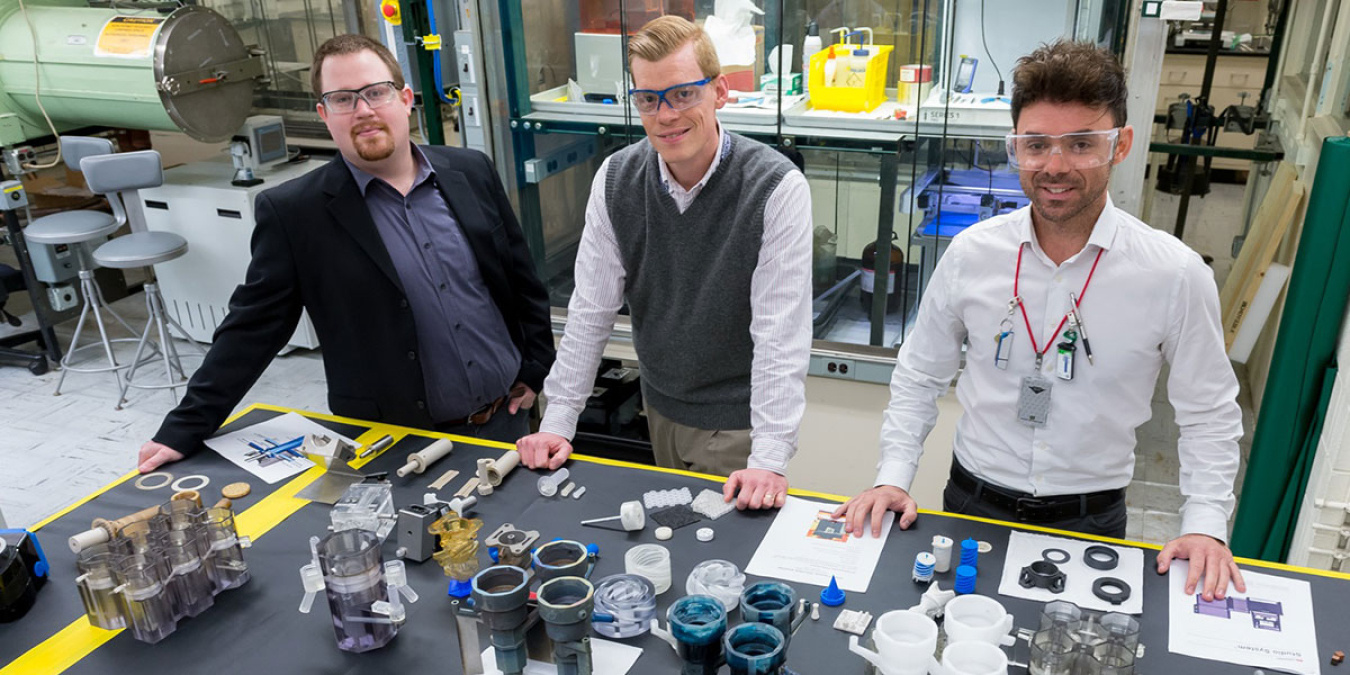Argonne National Laboratory is utilizing additive manufacturing as a pathway to recycle up to 97% of used fuel produced by nuclear reactors.
April 15, 2020

Argonne National Laboratory is utilizing the flexibility of 3D printing, or additive manufacturing, as a pathway to recycle up to 97% of used fuel produced by nuclear reactors. This new approach could drastically reduce the amount of used fuel stored and the time it remains hazardous.
Separation Anxiety
The first step in the process involved separating the highly radioactive actinide isotopes, americium and curium, from the rare earth metals, lanthanides. This stems from a technique discovered in the 2013 called Actinide Lanthanide Separation Process (ALSEP). In the past, researchers struggled to find a way to transition their work from the laboratory scale to the much larger industrial scale. That has changed with the incorporation of additive manufacturing.

From left to right: Peter Kozak, Andrew Breshears, M Alex Brown, co-authors of a recent Scientific Reports article detailing their breakthrough.
The Breakthrough
A team of Argonne scientists redesigned the ALSEP process around devices called centrifugal contactors. These devices can be replicated through additive manufacturing offering flexibility and speed to the process. By printing the contactors and linking them together, Argonne engineer Peter Kozak achieved a continuous ALSEP process. If a part fails, it can be easily reprinted and replaced.
Added Benefits
Not only does this advancement expedite the process, the design of the devices offers an added layer of protection against nuclear proliferation. The tubes connecting the 20 contactors run inside each device making it difficult to access and divert the radioactive materials to non-civil nuclear practices.
Why It Matters
This monumental shift has the potential to increase electricity production in fourth-generation reactors and could improve the process of recycling used nuclear fuel by an additional two percent from previous techniques developed by Argonne in the 1970s.
This additional step may reduce the length of storage almost one thousandfold.
Next Steps
While this method is still in its early stages of study, researchers are exploring new ways to reduce the size of the process and achieve greater separation. The details of the study were presented in Scientific Reports in September 2019.

